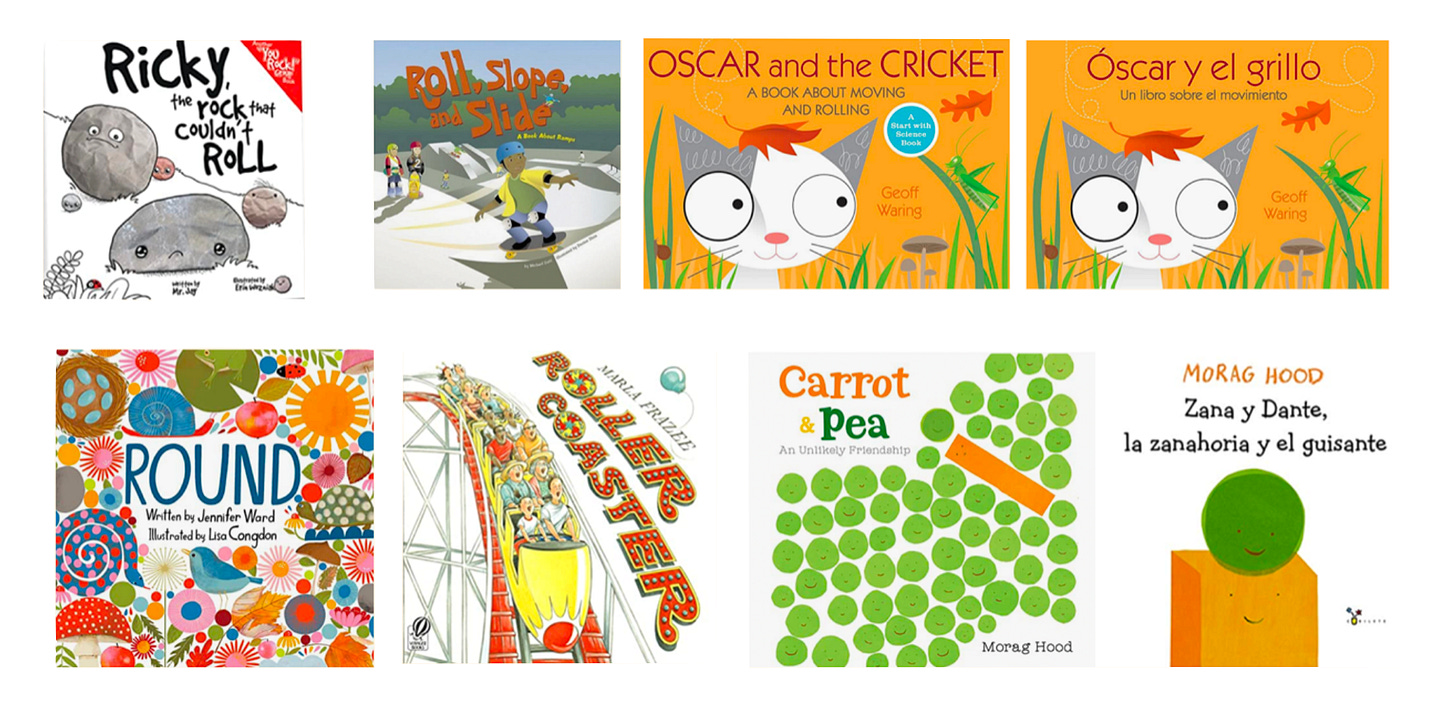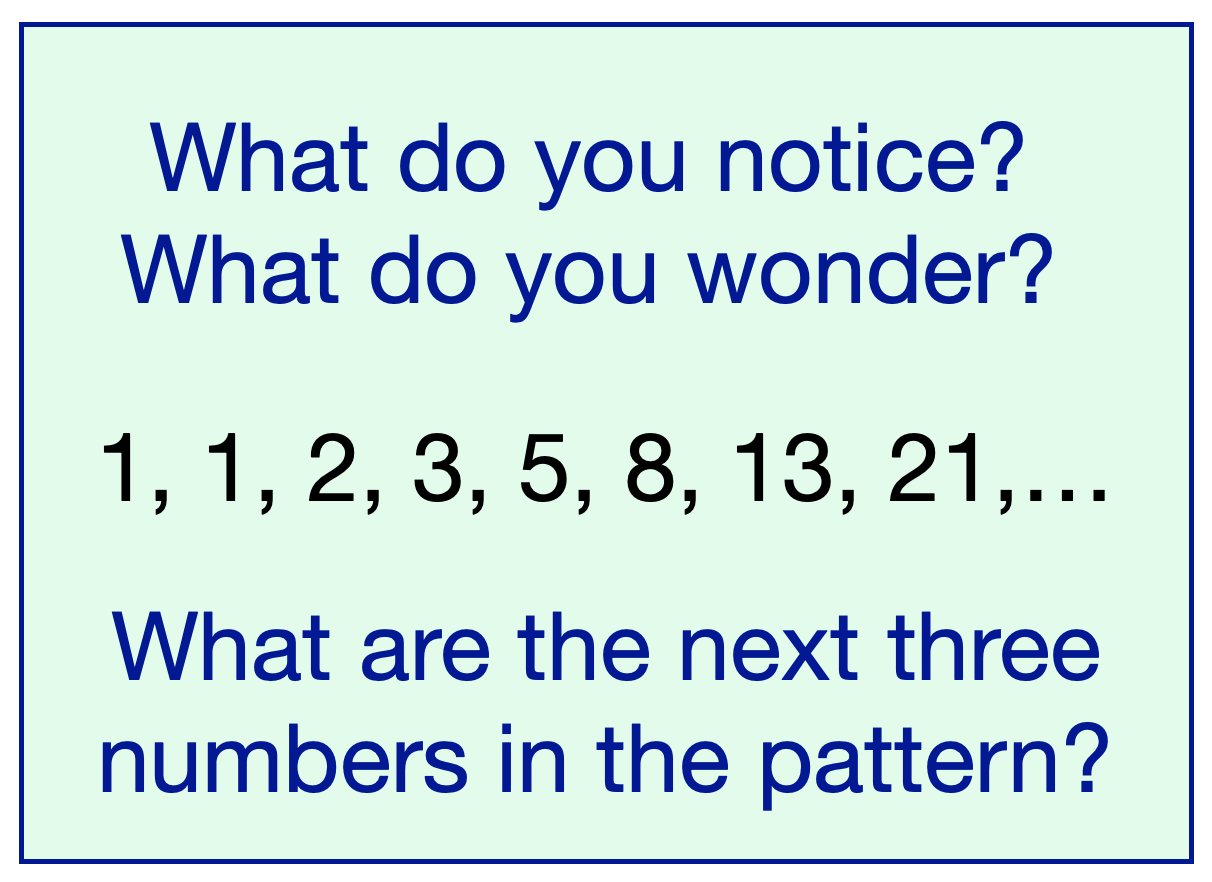Ramps and Rollers
Ramps and rollers support playful experimentation. They’re a perfect way to encourage children to test, modify, predict, tinker, and try again.
Homemade rolling kits are easy to assemble. A cardboard tube, piece of cardboard, table, cutting board, large book, or the lid of a large plastic container can become a ramp. Empty containers, a roll of tape, lemons, pine cones, cardboard tubes, acorns, marbles, corks, balls, or spools can be used as rollers. Include materials in your kit that can be used to modify the ramps and rollers, objects like binder clips, scissors, rubber bands, tape, washers, clothes pin, and objects that can be used to add weight to the rollers and height to the ramps.
Ramps and rollers spark children’s curiosity. They may ask:
I wonder if a banana will roll down the ramp?
How can I slow the marble down?
Encourage children to add objects to the rolling kit so they can test the ideas they wonder about.
As children explore you might ask:
What are you working on?
What have you noticed?
If a child is confident in what they are building and testing, you might ask them:
What do you think will happen if you add more weight to your roller?
What do you think will happen if you connect multiple rollers together?
Encourage children to compare different rollers, noticing how they are similar and different, and how they roll.
Step back and observe carefully. Pay attention to how the child explores, modifies their rollers, and tests them.
After the child has had plenty of time to explore independently, you might ask:
What could you do to slow the rollers down?
What do you think will happen if you add some weight to your roller?
How could you make the roller move more quickly?
How could you change the rollers to travel in straight, curved, or zigzag lines?
By observing children, you can plan ways to support their future modifications and investigations. Encourage children to try new things each time they play with ramps and rollers.
They may suggest modifying the ramp’s angle, adding objects to the ramp, exploring the sounds made when different containers are filled with objects and rolled down the ramp, or designing different types of rollers. Let the ideas for exploration come from the children. Follow their lead.
Read About Ramps and Rollers
Here are some book ideas to get you started.
Carrot and Pea (Zana y Dante: La Zanahoria y El Guisante) - Morag Hood
Round - Jennifer Ward
Ricky, the Rock that Couldn’t Roll - Mr. Jay
Roll, Slope, and Slide - Michael Dahl
Oscar and the Cricket (Oscar y el Grillo: Un Libro Sobre Mover y Rodar) - Geoff Waring
Roller Coaster (La Montaña Rusa) - Marla Frazee
Carrot and Pea Book Guide & Activities
Check out the Early Math Project’s book guide and activities for the book Carrot and Pea written by Morag Hood.
In Carrot and Pea, you’ll meet two friends, Lee and Colin, who discover their own talents and unique strengths. The book is an imaginative way to explore math and engineering with your child. Use it to make comparisons, explore three-dimensional shapes, classify, and begin to tinker. The Early Math Project’s book guide and original activites for Carrot & Pea: An Unlikely Friendship can be found here.
Use the activities to investigate how objects roll or slide down a ramp. Enjoy exploring the phenomenon of rolling and discovering how rollers can be modified to change the way they move and sound.
STEAM Starters: Tinkering for Early Learners
Free STEAM Starters Online Training Modules
The Early Math Project is excited about these great free training modules!
You can access these resources by visiting California Early Childhood Online (CECO) and taking the STEAM Starters interactive online training modules. The modules were developed collaboratively by the California Department of Social Services, WestEd, and The Exploratorium of San Francisco to guide teachers in the planning, implementation, and reflection of engaging in STEAM learning with young children. They feature engaging content and real-life experiences shown through video in various early learning settings. They showcase ramps and rollers as a guided STEAM exploration as well as explorations with light and shadow and balance through an unstable table activity. Explore these modules by logging in or creating a free account with CECO, scrolling to the module catalog and typing in STEAM. These resources from the STEAM Starters modules can be helpful as you think about using ramps and rollers with children: Ramps and Rollers and Ren and the Flat Marble Track.











